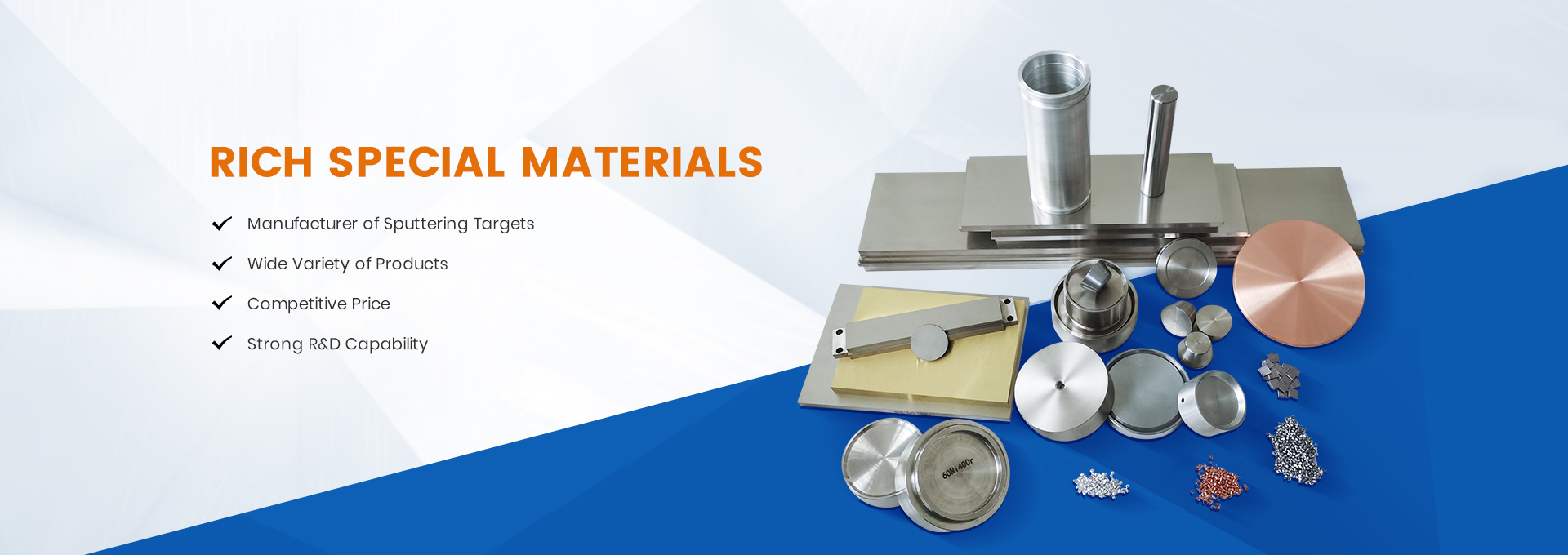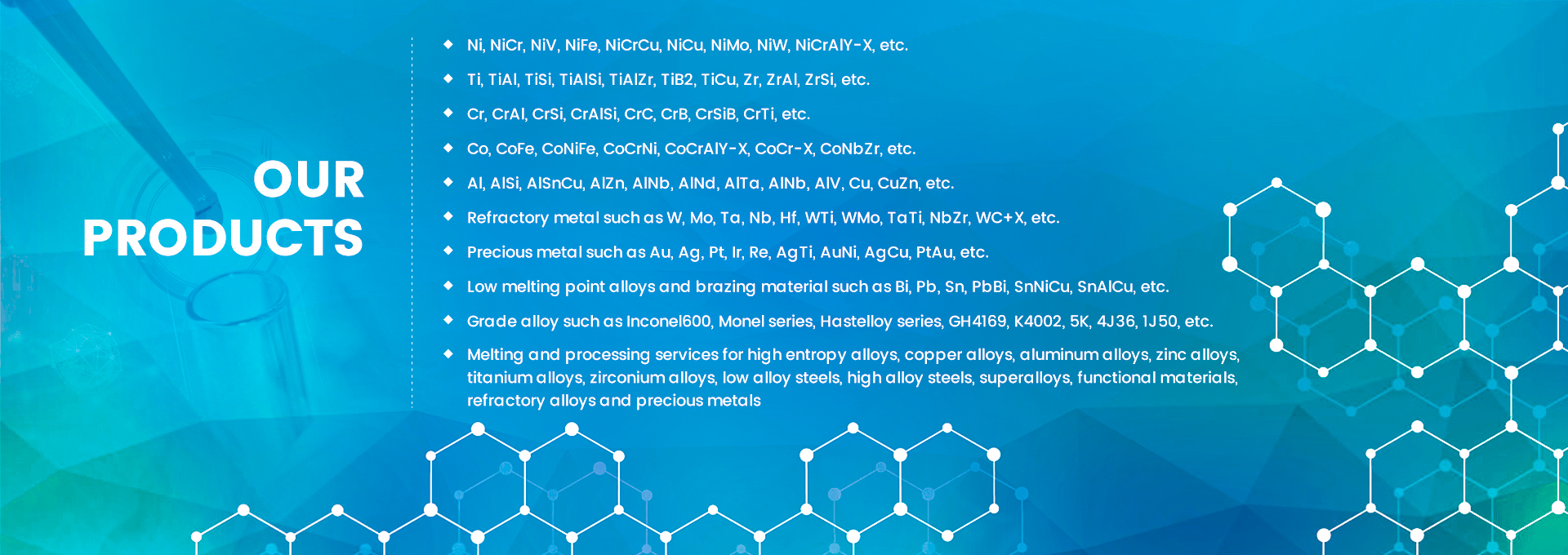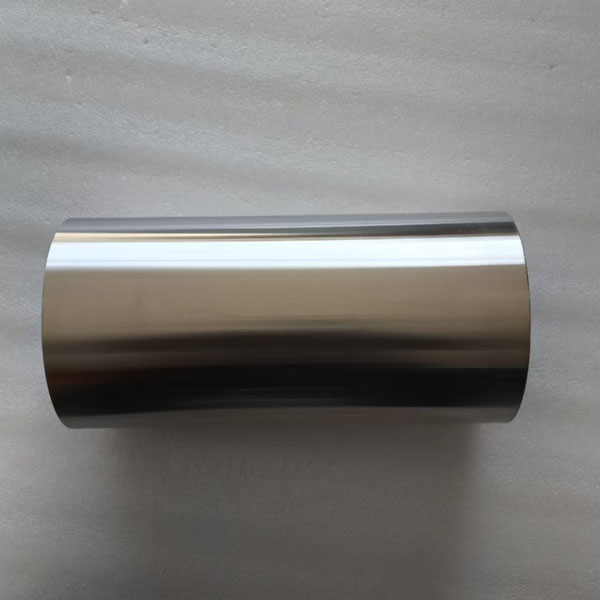Nickel-iron-molybdenum alloy target is a kind of alloy target composed of nickel (Ni), iron (Fe), molybdenum (Mo) three metal elements in accordance with a certain proportion, mainly used in thin film deposition technology, by sputtering and other methods in variousmatrix materials to prepare nickel-iron-molybdenum alloy film with specific properties.
The preparation process of nickel-iron-molybdenum alloy tubular target materials mainly includes the following steps:.Raw material preparation: Select high-purity nickel, iron and molybdenum as raw materials.
2.Melting: Put the NiFeMo alloy raw materials into a vacuum induction furnace and conduct melting at high temperature. The melting temperature should be 50-150°C higher than the melting point of the raw material with the highest melting point, and the melting time is 20-40 minutes.
3.Nickel base alloy materials casting: Pour the NiFeMo molten liquid into the mold. The casting temperature should be 50-100°C higher than the melting point of the raw material with the highest melting point, and the casting speed is controlled at 0.5-1.5 kg/min to obtain an ingot.
4.The NiFeMo alloy ingot homogenization treatment: Perform homogenization treatment on the ingot to eliminate compositional segregation and casting stress. The treatment temperature is generally 800-1000°C, and the treatment time is 2-4 hours.
5. Nickel iron molybdnum cast ingot hot rolling and cold rolling: Perform hot rolling and cold rolling on the ingot to break the as-cast grains and improve the density and uniformity of the material. The hot rolling temperature is generally 800-1000°C, and the rolling deformation amount is 30%-50%; the cold rolling deformation amount is 10%-30%.
6. Metal alloy materials Annealing: Perform annealing treatment on the cold-rolled material to eliminate work hardening and internal stress and improve the plasticity and toughness of the material. The annealing temperature is generally 600-800°C, and the annealing time is 2-4 hours.
7.Ni alloy sputtering target Machining: Machine the annealed material to make tubular target materials of the required size and shape.
8.NiFeMo magnetron sputtering target quality inspection: Conduct quality inspection on the prepared target materials, including chemical composition analysis, microstructure observation, mechanical property testing, etc., to ensure that the quality of the target materials meets the requirements.
The applications of nickel – iron – molybdenum alloy tubular target materials include:
1.Electronics field: NiFeMo alloy pvd target is used to manufacture thin – film resistors in integrated circuits, magnetic films of magnetic storage devices, etc., so as to improve the performance and stability of electronic components.
2.Semiconductor industry: During the semiconductor manufacturing process, NiFeMo metal alloy sputtering target can be used for thin – film deposition, playing roles such as electrical conduction, barrier, and diffusion barrier, which helps to enhance the performance and reliability of chips.
3.Magnetic materials: Nickel base alloy materials is used to prepare magnetic films, which are applied in magnetic sensors, magnetic recording media, etc., such as the magnetic heads of hard drives and magnetic tapes.
4.Thin – film solar cells: Nickel alloy sputtering target is used to prepare the conductive layer of solar cells, contributing to the improvement of the photoelectric conversion efficiency and stability of the cells.
5.Surface coating: Nickel iron molybdenum target provides wear – resistant, corrosion – resistant and decorative coatings for the surface of workpieces, enhancing their service life and appearance.
6.Flat – panel displays: Nickel base plannar metal alloy target is used to manufacture components such as conductive layers and electrodes in flat – panel displays.
Nickel-iron-molybdenum alloy target has good soft magnetic properties and can meet the special requirements of electronic components for magnetism. Excellent mechanical properties, high hardness and strength, to ensure durability. With excellent electrochemical properties, outstanding performance in energy related fields. The composition and structure are controllable, and can be customized according to different application scenarios.
Post time: Jan-15-2025






